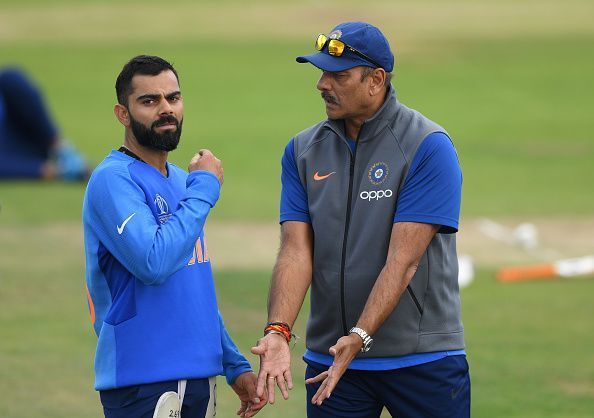
Team India: A champion side, but what’s the missing piece?
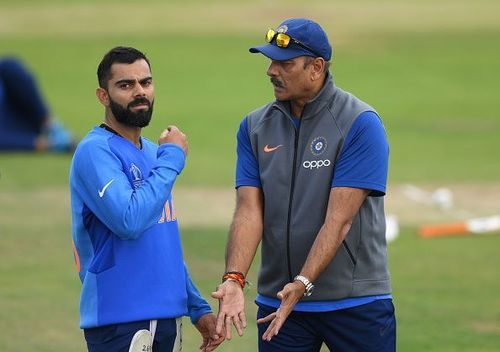
Birmingham: At the start of the World Cup, India off-spinner R Ashwin, a World Cup winner himself in 2011, said “India will dominate the 2019 World Cup like how Australia did in 2003 & 2007.” Almost two weeks later, Ashwin repeated the same.
As Ashwin and other experts had predicted, India dominated the League phase of the tournament topping the table with 15 points. Dominate is the ideal word. India dominated every single opposition they came across except England and a rain washout against New Zealand.
Five hundreds by an opener - Rohit Sharma with 648 runs, Jasprit Bumrah - the best death overs bowler with 18 wickets, the presence of king Virat Kohli, the finisher MS Dhoni, the best wrist spin attack in the tournament, what else do you need?
Legendary West Indies skipper Clive Lloyd too felt that India have a “good balanced side” with good spinners, pacers and very good batsmen.
India definitely had the side that could “dominate” an entire World Cup. But something was missing. What was the missing piece?
40 minutes of bad batting by the top three, in a big match, the semi-final. Was that the missing piece? Don’t think so.
The middle muddle. Australia had dominated for more than a decade in World Cups because they had a middle-order that could counter punch in adverse situations and their top-order invariably landed the knockout punch in knockout matches.
Let’s take a look at the 2011 World Cup. The Indian middle-order overcame the Aussie challenge in the quarterfinal and it was once again the duo of Dhoni and Yuvraj, that saw India romp home against Sri Lanka in the final.
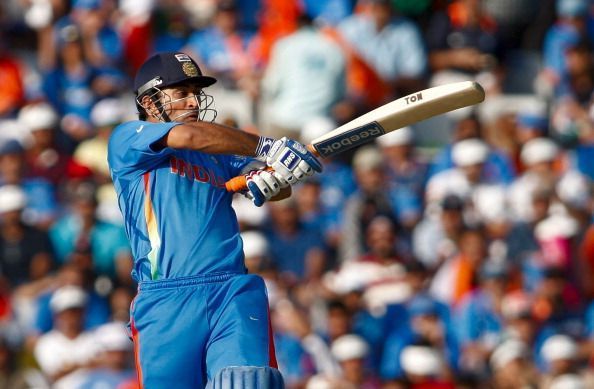
Former Sri Lanka coach Dav Whatmore had once mentioned about how he had cautioned the Sri Lankan middle-order ahead of the India-Sri Lanka World Cup semi-final in 1996 that they could well be 0 for 2 in no time.
Such was the impact Sanath Jayasuriya and Romesh Kaluwitharana had in the tournament in the lead up to the semifinal, Whatmore had actually made it a point to address the middle-order that the semifinal against India could well be their turn to stand up and deliver.
He was spot on. India trapped Jayasuriya & Kaluwitharana and SL were 35/3. But the middle-order was mentally prepared for the challenge. Aravinda de Silva, Roshan Mahanama, Arjuna Ranatunga and the rest rebuilt the sinking ship.
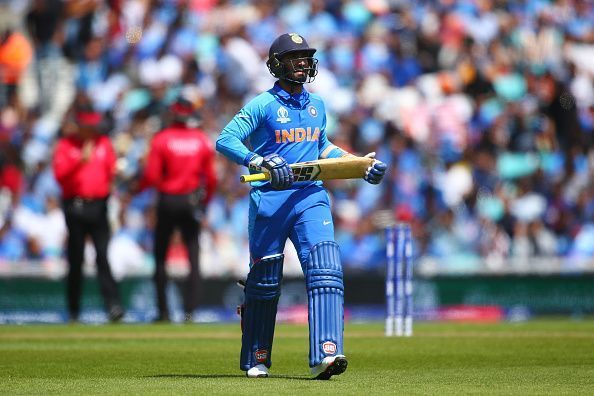
In this semi-final clash, India faced the same issue and the middle order needed to step up.
Was this Indian middle-order mentally prepared for a 5/3 situation? Was there a plan B that could have sorted a batting collapse? Was Pant the right man at No 4 against a moving ball? What was Dinesh Karthik’s role in the side? Was he the finisher or what was he?
Why not MS Dhoni at No 4 at 5/2, the man who has resurrected the team from batting collapses time and time again? Dhoni’s unusual technique at times messes up with the plans of the opposition bowlers.
For long, India were on a quest for their No 4 candidate and a settled middle-order. In fact, a few fans from Jamaica, ahead of the India-England match, said that India need to find a guy who can rotate strike in the middle-overs at No 4 & 5.
Post the England contest, in which Rishabh Pant made his WC debut, Indian batting coach Sanjay Bangar said that they wanted a left-hander in the middle to rotate strike.
"The team management was feeling the absence of a left-hander since Shikhar got injured. It was a ploy to use right-left combination in the middle overs to upset the bowling plans.We’re trying to help him with the various mindsets and the roles that come with the middle order job, and the importance of the right-left combination… so straightaway he can put the pressure back on the spinners," he said.
There was a spell in the semifinal from Mitchell Santner when his figures read 6-2-7-2. Rishabh Pant and Hardik Pandya couldn't nudge the ball around and rotate strike. It was either block, block or bang, bang. Eventually both Pant and Pandya got out to the left-arm spinner, trying to whack the ball out of the ground.
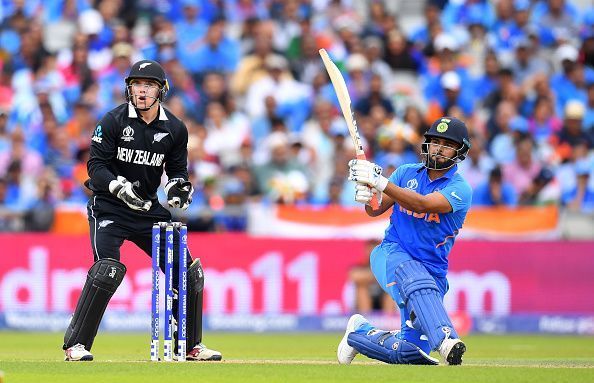
India dearly missed someone who could have tapped and run. Kohli, Rohit and Rahul were unfortunately back in the hut even before the crowd settled down post the mid-innings break and such is the sport that it happens in a team game.
Having stuck with Kedar Jadhav at No 6-7 for the first half of the tournament, Karthik got a look in post the England defeat. Karthik walked in late against Bangladesh and didn't do much and he didn't get to bat against Sri Lanka.
Before the match against Sri Lanka, Karthik had mentioned: "When I go in at No 7"... "I think they've been very clear on what my role has been. When I go in at No. 7, I need to judge this -- assess the situation of the game and then play accordingly. If obviously we need to cross the line when we're batting second, then I need to pace myself accordingly".
"If you're batting first, then make sure we get to the par score that's required. They've made it clear that this is where I'll be batting, and my role is to make sure, whatever the situation is, assess it and do the best that I can," he said, summing up his role in the batting order.
Against New Zealand, Karthik walked in with the team at 5/3 in the third over. It took 21 balls for Karthik to open his account and there was a little phase where there was no third-man in play and it has been a while since we had seen such a field being employed in ODI cricket.
It was a stale-mate situation for almost 10 overs with Karthik and Pant in the middle. They were trying to see off a dangerous opening spell from Boult and Henry. If there was one bowling attack that could have reduced India to 10/3 or 18/4, then it was this attack led by Trent Boult.
“I think the game pretty much changed in those first 40 minutes when we were batting and, as I said in the post-match, New Zealand deserve a lot of credit because they put up a great display how to bowl with the new ball and they had perfect line and lengths and forced us to sort of make errors, if any, or bowl good deliveries to us so the pressure created was immense in those first 40, 45 minutes,” Kohli said at the end of the match.
A top-order collapse was bound to happen. Everyone hoped that the law of averages wouldn’t catch up with Rohit or Kohli or Rahul but it did, at the wrong time. It was a magical spell of fast bowling from Boult and Henry. They set up each of Indian batsmen and undid them. In the end, all one could say was, "Well bowled".
With the exception of Dhoni, who thrives under pressure, and Ravindra Jadeja, who had to prove a lot to a ‘few critics’, the rest failed to execute their plans.
The shot selections from Pandya and Pant were questionable given the situation. Kohli looked upset post Pant’s dismissal and he did admit that he had “made a few errors” when he was young and that Pant will learn from his mistakes.
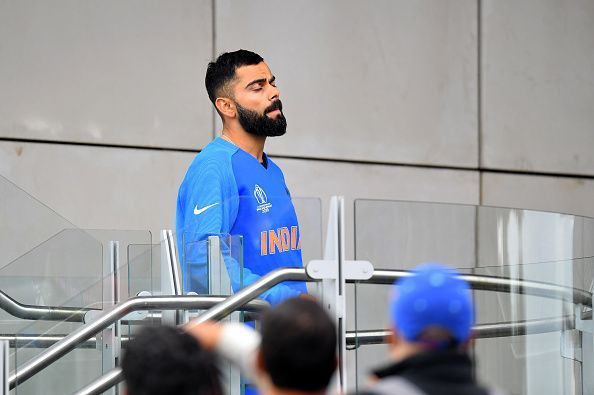
“He is an instinctive player and did well to overcome that situation and stringing a partnership with Hardik, I think the way they played after the loss of three wickets, four wickets rather, was quite commendable and in hindsight he's still young, so I made many errors when I was young in my career and he will learn, he will look back and think yes, he could have chosen a different option in that situation and he realises that already,” said Kohli.
The Indian skipper further added: “All these guys have a lot of pride and passion to play for their country and they are the ones who feel the most disappointed when a mistake happens. On the outside, it looks like it was an error but the person who makes it, trust me, they are the ones who suffer the most with it.”
At 24/4, with Dhoni in the dressing room, India decided to send Pandya to face the likes of Boult, Henry and Ferguson and Dhoni walked in at No 7.
"Well, he's (Dhoni) been given that role after the first few games of being in a situation where he can, if the situation's bad, he can control one end like he did today or if there is a scenario where there are six or seven overs left he can go and strike," said Kohli. Karthik or Dhoni at No 7?
One opener scores 5 hundreds in a single World Cup, the other opener - who was the designated No 4 - steps up to the challenge and the No 3 batsman is the ‘King’ when it comes to amassing runs.
“Do you think that there was one day that you should have expected the middle order to put their hands up?” was the question to Kohli. A fair question as well.
“Look, you obviously feel bad for the result and everyone goes out there to win the game for the team and if it doesn't happen, you feel like, you could have done things differently or look at things in hindsight. But, yeah, that is why these games are called knockouts because if the opposition plays better, you are out of the tournament. So we have to accept that,” Kohli said.
Right from the beginning of India’s World Cup campaign, the Indian middle-order was always under the scanner and it once again came down to the middle-order.
“I don't think that I would like to break things down immediately, but in time we'll have to sit down and analyse where we went wrong and the things we could have done right in this game particularly,” said the Indian skipper.
The Indian team management analysed their options for the past three years to zoom in on their candidate for No 4 slot and at the conclusion of yet another World Cup semifinal disappointment, the hunt for the new No 4 candidate for 2023 World Cup could well have begun.
In the end, it is all a part of the process.
Also read – World cup winners list
Follow Sportskeeda for all the updates on World cup points table, news, live scores, world cup most wickets, schedule, most runs, and fantasy tips.